Question bank
Chapter-1 Beautiful Nature
Q-1 Complete each sentence by filling in the missing letters of the words.
Q-2
Read these facts about some plants. Write their names below their pictures.
1. The cluster of this plant looks like a hen, that is, surrounded by smaller patches, the chicks. ________________

2. This plant is a member of the mint family and its flowers look like caps. ________________

3. This plant gets its name from its leaves, which are shaped like a large ear or shield.____________
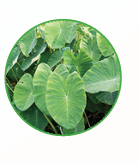
4. This plant has flowers that look like flying bats. It has long ‘whiskers’ attached to the flowers. ________________
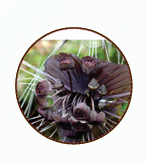
5. It is a small, round, ribbed cactus resembling a sea urchin, usually dark green with distinct white areoles and it bears large, colorful flowers on top. _______________

6. This is a plant in Australia. Its sting can last for years and its pain is so unbearable that people have killed themselves after touching it. __________
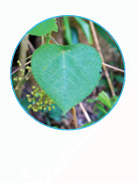
7. It has a sap that is so toxic that it can paralyze your vocal cords. ________________

Q-3
Read the clues, look at the pictures and fill in the blanks :
1. This tree-floating water plant grows commonly in stagnant water. It is an aggressive invader that may kill other plants in the habitat by blocking sunlight. _____________
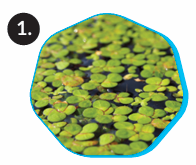
2. The giant sea plants actually a species of large brown algae found in the Pacific Ocean an din the southern oceans near South America, South Africa and Australia. It grows in dense stands, knowns as kelp forests, which are home to many water animals. _________________

3. This free-floating perennial aquatic plant is native to tropical South America. It has feathery, freely hanging purple–black roots and beautiful purple and pink flowers. It grows vigorously and can double its population in two weeks. _____________
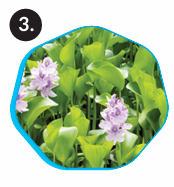
4. This floating plant has small flowers with five yellow or white petals. Some species of this plant are aquatic weeds. _____________
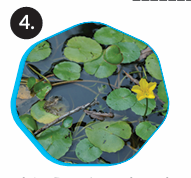
5. This floating plant has huge spongy leaves without stems, and roots hanging submerged beneath the floating leaves. It is found in nearly all tropical and subtropical freshwater bodies. _____________
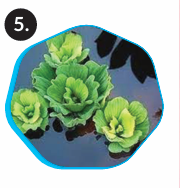
Q-4
Do you know about these plants and flowers ?
1. This purple flower is dried and then used for scenting linen. It is also a colour. ____________
2. This stands as a symbol of purity. ___________
3. This plant is the symbol of everlasting life. _________
4. This attractive flower shares its name with a part of the eye. ____________
5. This stands for remembrance. ___________
6. For the Chinese, this flowers is a symbol of fruitfulness, peace and beauty. ____________
7. A Christmas decoration, this plant symbolises holiday season joy and goodwill. ___________
Q-5
Write T for the true statements and F for the false
1. The dracula ant feeds on the blood of its own young offspring.
2. Honeybees sting only once, after which they die.
3. Fireflies emit ‘cold light’, which means they emit light without any heat.
4. Most of the insects in the world live in the deep sea.
5. A fear of insects is known as Entomophobia and Insectophobia.
6. The butterflies of Kerguelen Island can fly higher than most birds.
7. Some cicadas can make sounds that may reach as loud as 120 decibels.
8. Hornets, yellow jackets and cicada killers are all various kinds of wasps.
Q-6
Name the insects described in the descriptions below :
1. This beetle uses its own light to attract mates. _______________.
2. This polka-dotted carnivore is often sold to farmers to control pests such as aphids, scales and mites. _______________.
3. This insect is also known as the devil’s darning needle. _______________.
4. This bloodsucking bug causes Lyme’s disease. _______________.
5. This notorious plant pest, also called plant louse, can produce about 50 to 100 babies per year. ________
Q-7
Write their names in the blanks provided.
1. Also known as the Persian Greyhound, it is a standardised breed developed from sighthounds. ________________
2. A spitz type of dog breed is originally from northern China. _________________
3. This breed has physically distinctive features, such as a wrinkly, short-muzzled face and a curled tail. _________________
4. Its main use was to herd livestock and pull carts laden with butchered meat to the market. _______________
5. A British breed of retriever gun dog. ______________
6. One of the smallest breeds of dog, and is named after the Mexican state. _______________
7. A German breed of working dogs of medium to large size ___________________
8. Descends from hunting dogs from the Middle Ages used to hunt wild boar and deer, and as guardians of German nobility. ________________
9. A sighthound dog breed that has been bred for game coursing. ________________
10. A breed of medium-sized dog noted for its uique white coat marked with black or brown-coloured 11 sports._________________
11. A long muzzle breed. It stands on its pads and is not usually heavy-footed. _________________
12. A breed of very large working dog from the Western Alps. ________________
13. Similar in appearance to the much larger foxhound. ________________
14. The coat is smooth and tight-fitting; colours are fawn, brindled, or white, with or without white markings. ________________
Q-8
An endangered species is the one which is rare and threatened with extinction. Humans have destroyed the natural habitats of some animals and killed many animals blindly.
1. The _______________ of Manipur, also called the dancing deer, lives in swamps made up of a thick mat of humus and dead vegetation
2. The Kashmir _______________ of Hangul is found only in the northern valleys of Kashmir. Its number has declined because of poaching and destruction of its habitat
3. The wild _______________ , found only in the Rann of Kutch, is one of the rarest mammals numbering less than 700 worldwide
4. The Monk _______________ of the Mediterranean has not been seen since 1962.
5. The _______________ of North Africa, a species of antelope hunted for its meat, is almost extinct.
6. The Mexican _______________ once roamed freely in the area between Arizona and New Mexico in the U.S. These were trapped and poisoned by hunters. Only a few exist today.
7. The _______________ was hunted for its flesh, blubber and a cash crop of tusks.
8. The Cochin Forest Cane _____________ is the smallest of its kind. It is on the verge of extinction.
Chapter-2 Sports & Entertainment
Q-1
Write ‘Yes’ or ‘No’.
1. Can a goalkeeper wear a jersey of the same colour as worn by his teammates ?
2. Can a goalkeeper score a goal for his team ?
3. Does an international match last 90 minutes ?
4. Has Brazil won the World Cup more number of times than any other team ?
Q-2
Try this oral football quiz.
1. What is the other name for football ?
2. What is the national championship in India called ?
3. What does EPL stand for ?
4. When is the World Cup Football held ?
5. Where was the World Cup Football held in 2022 ?
Q-3 Match these great players to the countries they represent.
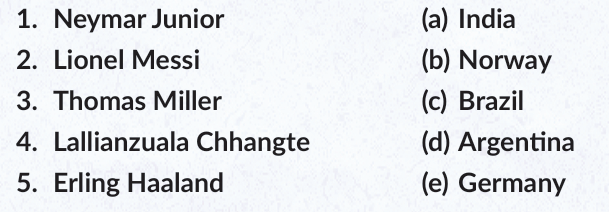
Q-4
Name these modern-day footballers.



Q-5
Write their names :
1. He is an Indian track and field athlete who is the reigning Olympic champion and the World Championship silver medalist in javelin throw. He is the first Asian athlete to win an Olympic gold medal in men’s javelin throw. __________________________
2. He is a former American competitive swimmer and nine-time Olympic champion. He was the most successful athlete at the 1972 Summer Olympics in Munich, winning seven gold medals, all in world record time. __________________________
3. He is a former American track and field athlete who won nine Olympic gold medals, one Olympic silver medal, and 10 World Championships medals, including eight golds. __________________________
4. He is a retired Jamaican sprinter, widely considered to be the greatest sprinter of all time. He is the world record holder in the 100 metres, 200 metres, and 4 × 100 metres relay. __________________________
5. She is known professionally as a Romanian retired gymnast and a f ive-time Olympic gold medalist, all in individual events. In 1976, at the age of 14, she was the first gymnast to be awarded a perfect score of 10.0 at the Olympic Games. __________________________
Q-6 Match the sports to their descriptions.

Chapter-3 Our Motherland
Q-1 Match the dances to the states/union territories they have originated from.

Q-2
Read the hints and write the names of the places associated.
Biryani is an aromatic rice dish cooked using several spices, notably saffron, and meat (typically chicken or mutton) that has been marinated overnight.
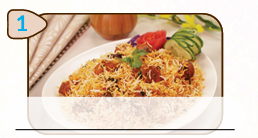
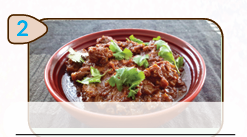
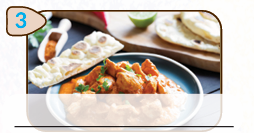
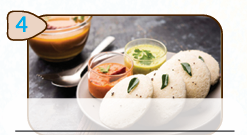

Chapter-4 Language & Literature
Q-1
Tick (✓) the correct statements and cross (X) the incorrect ones.
1. The Gita is a part of the great Indian epic, Mahabharata.
2. The Ramayana, another great Indian epic, is based on the life-story of Lord Rama (an incarnation of Lord Vishnu).
3. Kumbhakarna was the eldest son of Ravana.
4. Sita was the daughter of King Janak, the ruler of Mithila.
5. The Gita contains the philosophy of ‘Deed’ or ‘Karma’ as preached by Arjuna.
6. Vibhishana was the youngest brother of Ravana.
7. Meghanatha, Ravana’s son, was also called ‘Indrajeet’ because he once defeated the Rain–god, ‘Indra’.
Q-2
Some statements related with new words are given below.
1. A day when you are unhappy and easily upset, especially because your hair does not look the way you want it to look.
2. The practice of leaving a book in a public place to be picked up and read by others.
3. Trousers that are cut very low on the hips.
4. A person who participates in an activity only in his or her spare t ime.
5. A person who is very lively, energetic and cheerful.
6. An attractive, stylish or flamboyant person, especially a performer, who enjoys being in limelight
7. A way of identifying persons by their distinctive physical traits, such as their fingers and eyes, usually for security purposes.
8. A comma used after the penultimate item in the list of three or more items before the coordinating conjunction 'and' or 'or'
9. A person employed to visit a shop or restaurant in order to assess the quality of goods or services.
10. Computing software that enables a user to obtain covert information about someone's computer activities by transmitting data covertly from his/her hard drive.
11. Talk at length, especially in an inflated or empty way.
12. Limited capacity or scope for negotiation, especially in order to modify a previous statement or decision.
Q-3
Underline the correct word.
1. The school (principal, principle) came into the room.
2. My pants are too (lose, loose).
3. We went before the teen (council, counsel).
4. The (capital, capitol) of Colorado is Denver.
5. I like all (accept, except) the blue one.
6. This is a (stationary, stationery) bike.
7. I would like to (precede, proceed) with my story.
8. It was a steep (descent, dissent) into the cave.
9. Most drugs have side-(affects, effects).
10. Warm bread (compliments, complements) any meal.
11. I practise so I won’t (lose, loose) the game.
12. The Senate was in session at the (capital, capitol) today.
Chapter-5 Go Global
Q-1
Look at the pictures of some wonders around the world and read their names.
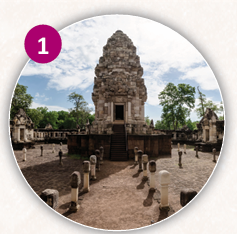

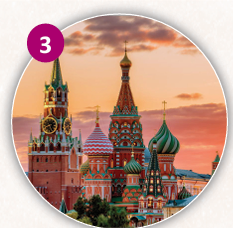

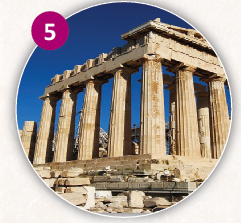
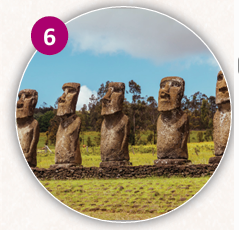
Q-2
Answer these questions and discover more about our diverse and wonderful world.
1. Which is the highest capital-city in the world ?
2. In which country are the Galapagos Islands located ?
3. Which island country hosts the giant, flightless parrot called the Kakapo ?
4. Which is the largest land-locked country in the world ?
5. In which country is Adam’s Peak located ?
6. Which continent is also known as ‘the Last of the Lands’ ?
7. In Australia, what is a willy-willy ?
8. In which countries will you find the Patagonian ice cap ?
9. The name of this landmass means ‘Opposite to the Arctic’.
10. Which is the largest country in the Caribbean ?
11. Which is the highest waterfall in the world ?
12. Which Indian state is known as the ‘Land of Lamps’ ?
13. Who designed the city of New Delhi ?
14. Into which body of water does the Amazon River flow ?
15. Which river has a tributary called the Tungabhadra ?
16. Which river flows by the most number of national capitals ?
Q-3 There are many types of rules. Match them to their meanings :

Q-4 Here are different governments. Match them to the right terms :

Q-5
Write the names of some famous people from the ancient times.
1. A Greek astronomer and geographer, his theory of the earth-centric universe was disproved by Copernicus. __________________
2. This king of ancient Babylon was famous for giving a ‘Code of Law’ to his subjects. __________________
3. A Greek mathematician and scientist, he is best known for his theorem. He is often referred to as ‘the Father of Numbers’. _________________
4. He was a Greek philosopher and Plato’s teacher. __________________
5. He was the first Roman emperor to convert to Christianity. He founded teh capital of the Eastern to Roman Empire. ___________
6. A Roman dictator, he is considered to be one of the world’s greatest conquerors. The month of July is named after him. _________________
7. A Greek scientist and mathematician, he discovered the principle of fluid displacement. __________
8. Roman poet, he is best known for writing the Aeneid, which is regarded as ancient Rome’s national epic. __________________
9. A Chinese teacher and philosopher, he taught the importance of self-discipline and respect for tradition in personal and public life. _________________
10. A Greek poet, he wrote the epic poems, the Iliad and the Odyssey. __________________
Q-6
Write the names of the countries to which these leaders belong.
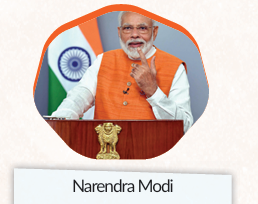





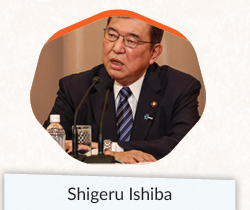
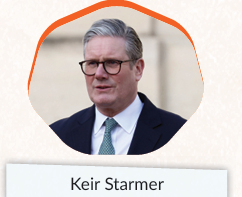
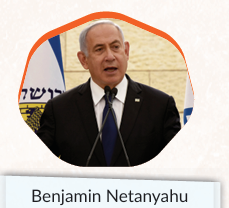
Chapter-6 Science & Technology
Q-1 It is the part of the language that is used by scientists in the context of their professional activities.
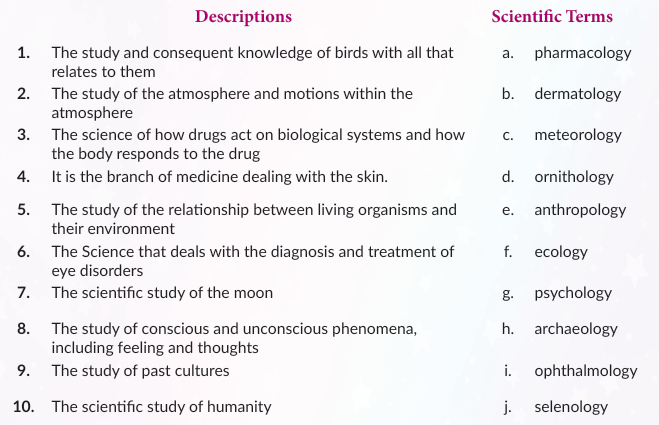
Q-2
Look at the pictures and name some of our famous scientists :
1. He won his battle with poverty, to become one of the country’s greatest astrophysicists. The Institute of Nuclear Physics, Kolkata, was established by him in 1947. He died in 1956. _____________
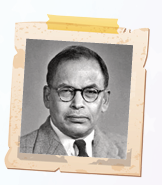
2. He founded the Bose Research Institute in Kolkata in 1915. Totally engrossed in his work, he never pursued fame. Though he was the first to study electric waves yet it was Marconi who got the credit. He invented the crescograph that measured the development of plants and came to the conclusion that plants also feel joy and pain like humans. He died in 1937._____________

3. Known as the Father of Indian Space Research, he was involved in all projects-be it from the development of uranium for nuclear energy, the development of rockets and missiles and to the installation of nuclear power stations. The ISRO at Thumba, near Thiruvananthapuram, is named after him. He died in 1971. ______________

4. He is remembered for his role in Indian Nuclear Programme. He was the main force behind India’s first nuclear test at Pokhran in 1974. Along with the Tatas, he established the National Institute of Science, Bengaluru. He died in 2004. _______________

5. He was the first Indian scientist to win a Nobel Prize in Physics (in 1930), for his observations on the scattering of light. 28 February, the day he shared his observations with the world, is celebrated as National Science Day in India. He also did some outstanding research work on the veena and the violin. He died in 1970. _______________

Q-3
True or false.
1. The virus that causes COVID-19 spreads primarily through respiratory droplets.
2. Antibiotics can prevent and treat COVID-19.
3. I should go to the emergency room for a test to make sure I don’t have COVID-19.
4. I should wear a mask to protect from getting COVID-19.
5. 5G mobile networks DO NOT spread COVID-19.
6. Wearing medical masks DOES NOT cause oxygen deficiency.
7. Nephritis is the inflammation of the kidneys.
8. The Ebola disease is named after a river in the Democratic Republic of the Congo.
9. Tonsillitis is an infectious viral disease that affects the central nervous system and can cause temporary or permanent paralysis.
10. Mumps is an infectious viral disease causing swelling of the parotid salivary glands in the face.
Q-4
Fill in the blanks.
1. ______________________ is the biggest of all the planets of the solar system.
2. __________________ has water and atmosphere and is perhaps the only planet which has conditions suitable for life. It has one moon
3. ________________ is the hottest planet. It is named after the Roman goddess of love and beauty.
4. __________________ is closest to the sun. This planet is named after the messenger of the Roman god.
5. ______________________ was the first planet which was discovered with a telescope.
6. ______________________ is a red planet, named after the Roman god of war.
7. ____________________ is named after the Roman god of the sea. It has eight satellites.
8. The Uranus rotates in ______________________ direction.
9. Our solar system has a diameter of ______________________ km.
10. ______________________ is named after the Roman god of farming. It is the second largest planet after Jupiter
11. It is believed that our solar system was formed ______________ years ago.
12. _______________ now is not regarded as a planet any more. It is now called a dwarf planet. It was once regarded as the planet farthest from the sun
Q-5
Name the element in each statement:
1. A deficiency of this leads to a disease called goitre. ..................................
2. A white-coloured element used in developing photographic negatives. .........................
3. Used for giving a white polish to costume jewellery. ..................................
4. Turns to liquid at room temperature, also known as quicksilver. ………………………………
5. An orange-pink element used to make electrical wires and cables…………………………
6. Used in the process of galvanisation, while electroplating an iron object. ...........................
Chapter-7 Reasoning & Problem-Solving
Multiple Choice Questions
Q-1 Tiger : jungle :: Alligator : ?
(i)
Air(ii)
Water(iii)
Mountains(iv)
SnowQ-2 Egg : Hen :: Seed : ?
(i)
Tiger(ii)
Gun(iii)
Fruit(iv)
TreeQ-3 Lorry : Road :: Boat : ?
(i)
Air(ii)
Water(iii)
Boat(iv)
ShipChapter-8 Life Skills & Values (NEP and NCF Based)
Multiple Choice Questions
Q-1 Cultivating non-violence promotes a sense of ______.
(i)
fear(ii)
calm and tranquillity(iii)
anger(iv)
confusionQ-2 Non-violent communication and empathy help build ______.
(i)
conflicts(ii)
unhealthy habits(iii)
healthier connections(iv)
competitionQ-3 Non-violence helps reduce anger and aggression and improves ______.
(i)
wealth(ii)
mental health(iii)
strength(iv)
popularityQ-4 Non-violence offers constructive ways to ______.
(i)
start fights(ii)
ignore problems(iii)
address disagreements(iv)
avoid peopleQ-5 Non-violent movements have the potential to ______.
(i)
start wars(ii)
transform societies and prevent wars(iii)
create violence(iv)
weaken nationsQ-6 Non-violent actions can galvanise people and create ______.
(i)
negative results(ii)
positive momentum(iii)
fear(iv)
divisionQ-7 Non-violence fosters ______ with others.
(i)
misunderstanding(ii)
connection(iii)
competition(iv)
isolationQ-8 Non-violent struggles often aim to address ______.
(i)
sports issues(ii)
food shortages(iii)
social injustices(iv)
natural disastersQ-9 The passage states that non-violence empowers individuals and communities to create positive change ______.
(i)
through conflict(ii)
without resorting to violence(iii)
by force(iv)
by ignoring problemsQ-10 Non-violence is described as a cornerstone of a ______ world.
(i)
fearful and divided(ii)
peaceful, just, and compassionate(iii)
violent and unstable(iv)
competitive and harshChapter-9 Entrepreneurship
Multiple Choice Questions
Q-1 In the Retailer Model, the retailer buys finished goods from ______.
(i)
customers(ii)
manufacturers or distributors(iii)
students(iv)
governmentQ-2 Which business model involves selling finished goods directly to consumers or through retailers and distributors?
(i)
Subscription Model(ii)
Manufacturer Model(iii)
Retailer Model(iv)
Service ModelQ-3 Which model charges a fixed fee for a specific service?
(i)
Fee For Service Model(ii)
Manufacturer Model(iii)
Retailer Model(iv)
Subscription ModelQ-4 Which of the following is an example of a Subscription Model?
(i)
Grocery store(ii)
Hairstylist(iii)
Netflix(iv)
Furniture shopQ-5 In which model does the retailer interface directly with customers?
(i)
Fee For Service Model(ii)
Retailer Model(iii)
Subscription Model(iv)
Manufacturer ModelQ-6 Who produces finished goods in the Manufacturer Model?
(i)
Retailer(ii)
Manufacturer(iii)
Customer(iv)
TechnicianQ-7 Hairstylists, accountants, and real estate agents are examples of which model?
(i)
Retailer Model(ii)
Subscription Model(iii)
Fee For Service Model(iv)
Manufacturer ModelQ-8 In the Subscription Model, customers usually pay ______.
(i)
one-time payment(ii)
pay per item(iii)
monthly or yearly recurring fee(iv)
only during discountsQ-9 Which model includes grocery stores, florists, and general shops?
(i)
Manufacturer Model(ii)
Fee For Service Model(iii)
Retailer Model(iv)
Subscription ModelQ-10 Which model allows a company to deliver products or services continuously to customers?
(i)
Retailer Model(ii)
Manufacturer Model(iii)
Subscription Model(iv)
Fee For Service ModelChapter-10 Yoga & Asanas
Multiple Choice Questions
Q-1 The word ‘yoga’ means ______.
(i)
exercise(ii)
union(iii)
breathing(iv)
postureQ-2 According to the passage, yogic poses were developed in ______.
(i)
China(ii)
India(iii)
Japan(iv)
GreeceQ-3 Yoga practice includes long periods of ______.
(i)
dancing(ii)
meditation(iii)
sleeping(iv)
joggingQ-4 Yoga poses can be used as a form of ______.
(i)
mysticism only(ii)
straightforward exercise(iii)
martial arts(iv)
entertainmentQ-5 Performing yoga poses with correct breathing helps to ______.
(i)
weaken muscles(ii)
strain joints(iii)
tone internal organs(iv)
reduce flexibilityQ-6 The balance of quiet and active poses promotes ______.
(i)
anger(ii)
instability(iii)
stress(iv)
stability and serenityQ-7 Yoga techniques help people enjoy ______.
(i)
movement and exercise(ii)
overeating(iii)
laziness(iv)
long hours of sleepQ-8 Yogic exercises enhance flexibility, stamina, stability, and ______.
(i)
fear(ii)
confusion(iii)
balance(iv)
tirednessQ-9 Yoga helps us become more concentrated and ______.
(i)
distracted(ii)
confused(iii)
clear-headed(iv)
sleepyQ-10 Yoga helps us develop a common sense of the body which is the foundation for ______.
(i)
frustration(ii)
poor health(iii)
our well-being(iv)
competition